VERMEER – SCUDERIE DEL QUIRINALE – ROME
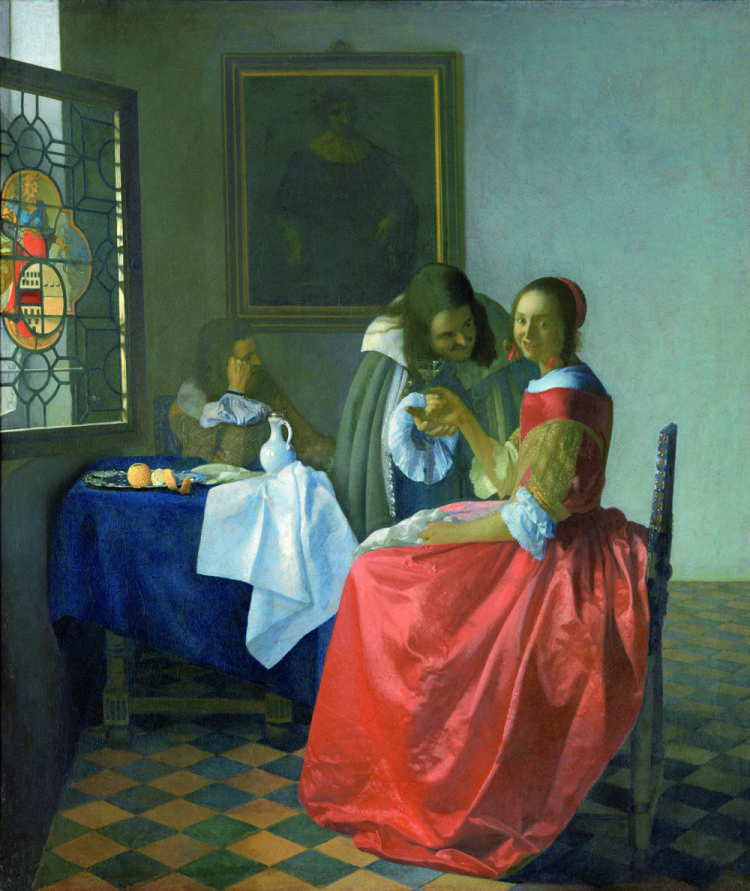
Text by Vittoria Biasi – Copyright 1F mediaproject
Vermeer
The Golden Age of Dutch Art
September 27th, 2012 – January 20th, 2013
Scuderie del Quirinale (Quirinale’s stables) – Rome
www.scuderiequirinale.it – http://english.mondomostre.it/categorie/categoria-181
Curated by
Arthur K. Wheelock, Curator of Northern Baroque Paintings National Gallery of Art, Washington;
Walter Liedtke, Curator of European Paintings Metropolitan Museum of Art, New York;
Sandrina Bandera, Milan Artistic, Historical and Ethno-Anthropological Heritage Superintendent;
Azienda Speciale Palaexpo Organization with Mondomostre co-producer;
Catalogue: Sandrina Bandera, Walter Liedtke, Arthur Wheelock Jr., Vermeer. The Golden Age of Dutch Art. Skira, Milan, 2012.
Ranked as a greatest among the Dutch artists, Johannes Vermeer (1632-1675) lives during a period of strong artistic fervour and a particular healthy economy. His little town of origin, Delft, already stimulated by immigration coming from the south of Flanders and after William II of Orange death, became an extraordinary arts centre and attracted the greatest painters of that age from Amsterdam and Harlem: Paul Potter, Carel Fabritius, Pieter de Hooch, de Witte whose works are here exhibited.
In 1675, after Vermeer death, the splendour of Delft is in the evening of its own life: many painters are already dead. Carel Fabritius died when the powder magazine exploded, destroying the little town during 1654.
Such an exhibition wants that the visitors take part in this particular historic-cultural situation, known as Golden Age. The eight canvas of Vermeer are talking to the works of artists like Gabriel Metsu, Pieter de Hooch, Gerrit Dou, Jacob Ochtervelt, Eglon van der Neer, Pieter Janssens Elinga, Egbert van der Poel, Quirijin van Brekelenkam, Frans van Mieris, Gerard ter Boch, Michiel van Musscher, Godfried Scalcken, Jan Verkolje, Ludolf de Jonh, Cornelis de Man, Hendrick van Vliet, Emanuel de Witte, Anthonie de Lorne, Daniel Vosmaer, Felice Ficherelli said the Rest.
The exhibition is arranged within ten rooms where the works are shown following the pictorial style. In the first room the art of veduta is opened by the paintings La Stradina (1658) (Streetlet), by Vermeer, and Veduta del Municipio nuovo di Amsterdam (1667) (Amsterdam New Municipal building Veduta), by Jan van der Heyden. In the second room we find the works where the inner architectural vision talks with light. The painting Interno della nuova chiesa a Delft (Inside of the Delft New Churh) with the vault of William the silent by Hendrick Cornelisz van Vliet presents a description of light with illusionistic impressions. The inside of the church can look as a large curtain that suggests the vault of William the silent Prince of Orange. Emanuel de Witte paints the inside of the same church and the vault of the dead prince, unveiling to the audience the fourth column concealed by van Vliet. Interno della Nieuve Kerk a Delft and the vault of William II the Silent is a paean to light, as in de Witte style, able of winning any limit, transforming the walls in a source of light, of a spatial dimension. De Witte is the painter of white light and of space swing of the interiors.
In Interiors of a Gothic Church with some patterns of Amsterdam Oude Kerk, de Witte gets through the visual line creating an uncatchable greatness of the interior, where the line of arches builds an intaglio of modulated lights on soft constructions, ochre coloured. The church, particularly in de Witte concept, is a reserved and large space, where God existence is talking to the town symbols of power (represented by family blazons) and to the human society. The exhibition concept of rooms has been constructed by connecting a twine to the poetics of the Dutch painters. Bandera, Liedtke, Wheelock connote the second room by exposing canvas wherein the triumph of inner white space is celebrated, as in the Chapel of the Laurenskerk in Rotterdam with the vault of Admiral Witte de With by Anthonie de Lorne. The paintings state that the optical approach for Delft painters have two vanishing points and that the perspective construction is different for de Witte as well. Recurrent element is the animals inside churches, like the dog in the de Lorne works.
The conversation with the church keeps on with the painting Veduta of Delft from an imaginary loggia by Daniel Vosmaer, follower of the theories on perspective during the first half of the seventeenth hundred century. The painters used unreal architectures to show the different pictorial results that could have been created by the knowledge of perspective. The tower of Ode Kerke portrayed by Vosmaer comes back in Il Canale (Channel) Oude Delft and the Oude Kerke at Delft by Jan van der Heyden. In the third room, curators compare Santa Prassede canvas (1655) by Vermeer, from the Barbara Piasecka Johnson Collection Foundation, with Santa Prassede (1640-1650) by Felice Ficherelli said the Rest, from a private collection. Santa Prassede by Vermeer is a juvenile work and reveals the value that the religious conception will take on his life and pictorial poetics. The artist gives to the face of the Santa and to the work a sense of tranquillity, meditation, that will connote the Vermeer pictorial course. The work is an important documentation and story on the knowledge of Italian Art in the Netherlands. Vermeer hard studied the Ficherelli’s painting. A copy had to be present in the Netherlands, probably, where Italian Art got an important market.
The next rooms are dedicated to the Dutch Art during Golden Age where the influence of Italian Art on themes and art composition is always possible to feel. The works representing the attributes of scientist as the Astronomer and the Geographer by Vermeer pertain to a painting of genre common in North Europe, dear to Rembrandt, but coming from Greek and Roman antiquity, divulged by means of Donatello and La Stanza della Segnatura (Supreme Court room) by Raphael. The astronomer and geographer are figures that make reference to the category of scientist and experts on sky and land, involved in studying the fundamental books, for example Institutiones Astronomicae & Geograficae, and on the back of the Astronomer is painted Il ritrovamento di Mosé (The Moses finding), which represents the symbol of the ancient geographer in Dutch imagination. The connections among the different artists are documented by an art that Daniel Arasse defines Paintings in the painting. Mosé salvato dalle acque (Moses rescued from waters), quoted in Astronomer, is painted by a different frame in Signore che scrive una lettera in presenza della domestica (Gentleman writes a letter before the servant). The paintings painted in the painting are not ever a true copy of the original one. Allegoria della fede (Allegory of faith) shown at the end of the exhibition course, presents a feminine personage with her look to a crucifix on a small altar. A curtain, expression of the textile Dutch art, keeps apart and qualifies the backdrop with its own feeling. On the back of the woman, Vermeer paints la Crocifissione di Jordaens, (Crucifixion of Jordaens) work owned by the artist mother in law. The painting in the painting is also present in Giovane donna in piedi davanti al virginale (Young woman stantind before the Virginal). The look on the young girl face seems to stem from the painting of Cupid, that holds a playing card with his own hand. The image is taken from the illustration of Otto van Veen. The musical dedication genre of young girls in Dutch society during the seventeenth century is documented by other works like La suonatrice di chitarra (The guitar player), La suonatrice di liuto (The lute player). The Vermeer’s paintings have their echo in other artist’s works, like Concerto di famiglia (Family concert) by Godefridus Schalcken, Il concerto (The concert) by Jacob Ochtervelt, Dama che accorda la torba (Lady attunes the torba) by Eglon van der Neer or more, Conversazione sentimentale (Sentimental conversation), open “soave” by Quirin van Brekelenken, that emphasizes the feel with the reproduction of a mountain landscape painting, symbol of difficulties that go with love.
The paintings that hints at music are paintings developing the metaphorical language of love, of harmony, devotion, of kindness in feelings.
It is shown on display the work of Peter Janssens Elinga Interno con gentiluomo, donna che legge e cameriera (Interior with a gentleman, reading woman and househelp) whose light through the window glasses marks out a route of cross-references, reflections and deviations.
Arthur Wheelock as a curator has shown the work to prove that Janssens Elinga constituted in Delft a style of painting parallel to that of Vermeer and De Hooch. Vermeer exalts the light reflections. In Allegoria della fede the globe descending between the woman and crucifix, reflects, gathers emblematically, the marks of what it is shown down below.
The exhibition is skilfully paged. At the end of the pathway we would like to keep on seeing and/or other works of Vermeer. The presence of eight works on a corpus of thirty four or thirty five works that reached us is not so bad. Such painters’ works that intersect also with the Flemish manuscripts and their atmospheres, prevail for the research on the light and the paint.
Vittoria Biasi
Curator and Art Critic
Translated by Salvatore Rollo – at salvatore_rollo@fastwebnet.it
.-.-.-.
Testo di Vittoria Biasi – Copyright 1F mediaproject
Vermeer
Il secolo d’oro dell’arte olandese
27 settembre 2012 – 20 gennaio 2013
Scuderie del Quirinale – Roma – www.scuderiequirinale.it
a cura di
Arthur K. Wheelock, Curator of Northen Baroque Paintings, National Gallery of Art di Washington;
Walter Liedtke, Curator of European Paintings, Metropolitan Museum of Art di New York;
Sandrina Bandera, Soprintendente per il Patrimonio Artistico, Storico ed Etnoantropologico di Milano.
Organizzazione Azienda Speciale Palaexpo, comprodotta con Mondomostre
Catalogo: Sandrina Bandera, Walter Liedtke, Arthur Wheelock Jr., Vermeer. Il secolo d’oro dell’arte olandese. Skira, Milano, 2012
Considerato tra i maggiori artisti olandesi, Johannes Vermeer (1632- 1675) vive in un periodo di grande fervore artistico e di particolare floridezza economica. La sua cittadine di origine, Delft, già stimolata dall’immigrazione che veniva dal sud delle Fiandre, dopo la morte di William II d’Orange, divenne uno straordinario centro artistico e attirò da Amsterdam e da Haarlem i più grandi pittori del periodo, come Paul Potter, Carel Fabritius, Pieter de Hooch, de Witte, le cui opere sono presenti in mostra.
Nel 1675, alla morte di Vermeer, lo splendore di Delft è al tramonto: molti dei pittori sono già deceduti. Carel Fabritius era morto nell’esplosione del polveriera che nel 1654 distrusse la città.
L’esposizione nelle Scuderie del Qurinale vuole far partecipare il visitatore alla particolare situazione storico-culturale del periodo, detto Golden Age. Le otto tele di Vermeer sono in dialogo con le opere degli artisti Gabriel Metsu, Peter de Hooc, Gerrit Dou, Gabriel Metsu, Jacob Ochtervelt, Eglon van der Neer, Pieter Janssens Elinga, Egbert van der Poel, Quirijin van Brekelenkam, Frans van Mieris, Gerard ter Boch, Michiel van Musscher, Godfried Scalcken, Jan Verkolje, Ludolf de Jonh, Cornelis de Man, Hendrick van Vliet, Emanuel de Witte, Anthonie de Lorne, Egbert van der Poel, Daniel Vosmaer, Felice Ficherelli detto il Riposo.
La mostra è distribuita in dieci sale dove le opere sono riunite per genere pittorico. Nella prima sala l’arte di veduta è introdotta dai dipinti La stradina (1658) di Vermeer e Veduta del Municipio nuovo di Amsterdam (1667) di Jan van der Heyden. Nella seconda sala sono raccolte opere in cui la visione architettonica degli interni dialoga con la luce. Il dipinto Interno della Nieuve Kerk a Delft, con la tomba di Guglielmo il taciturno di Hendrick Cornelisz van Vliet presenta una descrizione della luce, con effetti illusionistici. L’interno della chiesa può sembrare un grande sipario che lascia intravedere la tomba di Guglielmo il Taciturno principe d’Orange. Emanuel de Witte dipinge l’interno della stessa chiesa e la tomba del principe defunto, rivelando allo spettatore la quarta colonna occultata da van Vliet. Interno della Nieuve Kerk a Delft con la tomba di Guglielmo II il Taciturno è, come nello stile di de Witte, un inno alla luce capace di vincere ogni limite, trasformando le pareti in sorgenti luminose, in dimensione spaziale. De Witte è il pittore della luce bianca e del ritmo spaziale degli interni.
In Interno di chiesa gotica con motivi della Oude Kerk di Amsterdam De Witte attraversa lo spazio visivo creando un’imprendibile profondità dell’interno, dove la successione di archi costruisce un intaglio di luci modulate su architetture morbide, color ocre. La chiesa, nella concezione di de Witte in particolare, è uno spazio riservato, ampio in cui si sente la presenza di Dio in dialogo con i segnali di potere della città (rappresentati dagli stemmi di famiglia) e della società. Il concetto espositivo delle sale è costruito collegando un filo tra le poetiche dei pittori olandesi. I curatori Bandera, Liedtke, Wheelock connotano la seconda sala esponendo tele in cui si celebra il trionfo dello spazio interno, bianco, delle chiese, come Cappella della Laurenskerk a Rotterdam con la tomba dell’ammiraglio Witte de With di Anthoine de Lorne. I dipinti testimoniano che l’approccio ottico per i pittori di Delft ha due punti di fuga e che la costruzione prospettica è differente anche per de Witte. Un elemento ricorrente è la presenza di animali all’interno delle chiese, come il cane nell’opera di de Lorne, di de Witte.
Il dialogo con la chiesa prosegue nel dipinto Veduta di Delft da una loggia immaginaria di Daniel Vosmaer, seguace delle teorie sulla prospettiva del primo Seicento. I pittori si servivano di architetture fantastiche per dimostrare i diversi effetti pittorici che si potevano creare con la conoscenza della prospettiva. La torre dell’Ode Kerke raffigurata da Vosmaer ritorna in Il canale Oude Delft e la Oude Kerke a Delft di Jan van der Heyden. Nella terza sala, i curatori pongono al confronto la tela Santa Prassede (1655) di Vermeer, proveniente da The Barbara Piasecka Johnson Collection Fundation, con Santa Prassede (1640-1650) di Felice Ficherelli detto il Riposo, proveniente da una collezione privata. Santa Prassede di Vermeer è un’opera giovanile e rivela il valore che la concezione religiosa assumerà nella sua vita e nella poetica pittorica. L’artista dà al volto della Santa e all’opera un senso di tranquillità, di meditazione, che connoterà lo svolgimento pittorico di Vermeer. L’opera è importante come documentazione e testimonianza della conoscenza dell’arte italiana nei Paesi Bassi. Vermeer studiò molto il quadro di Ficherelli. Probabilmente una copia doveva essere presente nei Paesi Bassi dove l’arte italiana aveva un importante mercato.
Le sale successive sono dedicate all’arte olandese del Golden Age, in cui è sempre possibile sentire l’influenza dell’arte italiana per i temi e per la composizione artistica. Le opere che rappresentano la categoria degli scienziati, come L’astronomo e Geografo di Vermeer, appartengono ad una pittura di genere diffusa nel Nord dell’Europa, cara a Rembrandt, ma proveniente dall’antichità greca e romana, diffusa attraverso Donatello e la Stanza della Segnatura di Raffaello. Le figure dell’astronomo e del geografo fanno riferimento alla categoria di scienziati e studiosi del cielo e della terra, impegnati nello studio di libri fondamentali, come Institutiones Astronomicae & Geograficae e alle spalle dell’Astronomo è rappresentato Il ritrovamento di Mosè, che nell’immaginario olandese rappresenta il simbolo dell’antico geografo. I rapporti tra i differenti artisti sono documentati da un’arte che Daniel Arasse definisce Quadri nel quadro. Mosè salvato dalle acque, citato nell’Astronomo, è dipinto con un’altra inquadratura in Signora che scrive una lettera in presenza della domestica. I quadri dipinti nel quadro non sono sempre fedeli all’originale. Allegoria della fede, posto a chiusura del percorso espositivo, presenta una figura femminile con lo sguardo rivolto verso un crocifisso posto su un piccolo altare. Un tendaggio, espressione di un’arte tessile olandese, separa e definisce l’ambiente con una sua atmosfera. Alle spalle della donna, Vermeer dipinge la Crocifissione di Jordaens, opera di proprietà della suocera dell’artista. Il quadro nel quadro è presente anche in Giovane donna in piedi davanti al virginale. L’espressione della fanciulla sembra derivare dalla figura del dipinto di Cupido, che tiene in mano una carta da gioco. L’immagine è tratta dall’illustrazione di Otto van Veen. Il genere dell’impegno musicale delle fanciulle della società seicentesca olandese è documentato con altre opere, come La suonatrice di chitarra, La suonatrice di Liuto. I dipinti di Vermeer hanno la loro eco nelle opere di altri artisti, come Concerto di famiglia di Godefridus Schalcken, Il concerto di Jacob Ochtervelt, Dama che accorda la torba di Eglon van der Neer o ancora Conversazione sentimentale, opera ‘soave’ di Quirin van Brekelenken, che sottolinea l’atmosfera con la riproduzione di un quadro a paesaggio montuoso, simbolo delle difficoltà che accompagnano l’amore.
I quadri allusivi alla musica sono dipinti che sviluppano il linguaggio metaforico dell’amore, dell’armonia, della dedizione, della delicatezza dei sentimenti.
E’ presente in mostra l’opera di Peter Janssens Elinga Interno con gentiluomo, donna che legge e cameriera in cui la luce che attraversa i vetri delle finestre traccia un percorso di rimandi, riflessi e deviazioni.
Il curatore Artur K. Wheelock ha esposto l’opera per dimostrare che Janssens Elinga istituiva a Delft uno stile di pittura parallelo a quello di Vermeer e di De Hooch. Vermeer sublima i riflessi di luce. In Allegoria della fede il globo che scende dall’alto tra la figura femminile e il crocifisso emblematicamente riflette, raccoglie i segni di quanto è esposto al di sotto.
La mostra è sapientemente impaginata. Alla fine del percorso si vorrebbe continuare a vedere anche altre opere forse di Vermeer. La presenza di otto opere su un corpus di trentaquattro o trentacinque opere pervenuteci, non è poco. Le opere di questi pittori che si intersecano anche con i manoscritti fiamminghi e con le loro atmosfere, si impongono per la ricerca sulla luce e sul colore.
Vittoria Biasi
© Tutti i diritti riservati. Gli articoli possono essere riprodotti mettendo in evidenza che il testo riprodotto è tratto da www.1fmediaproject.net con il link attivo diretto al testo specifico.
Position the cursor on the images to view captions, click on images to enlarge them.
Posizionare il cursore sulle immagini per leggere le didascalie; cliccare sulle immagini per ingrandirle.

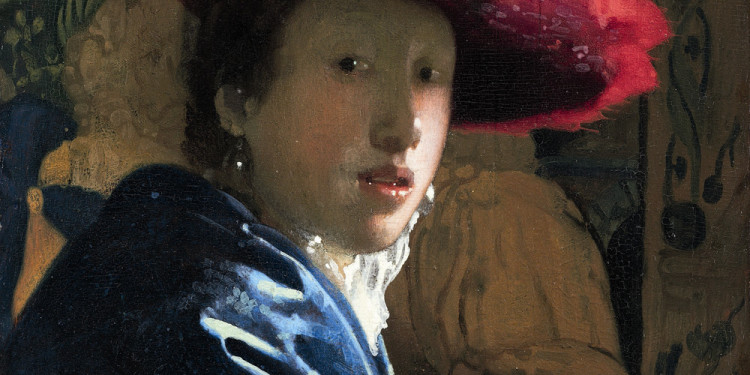
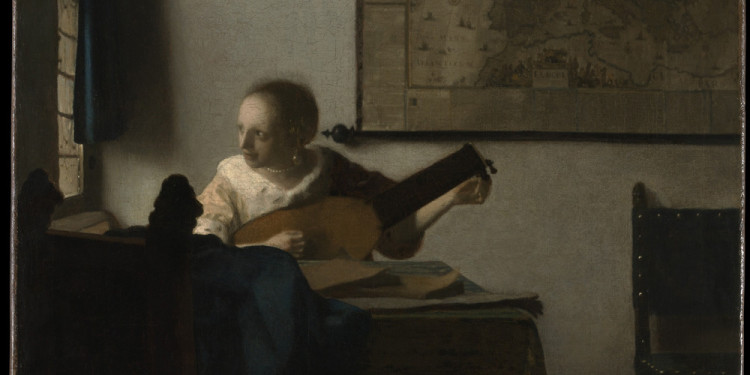
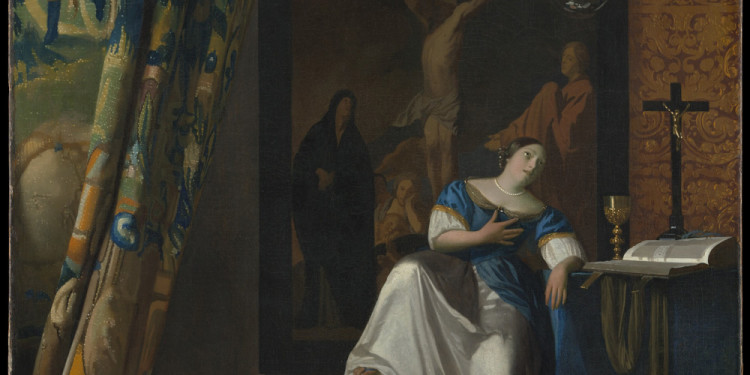
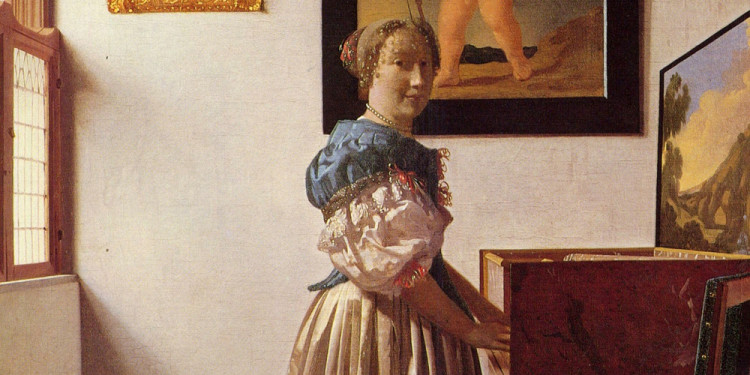
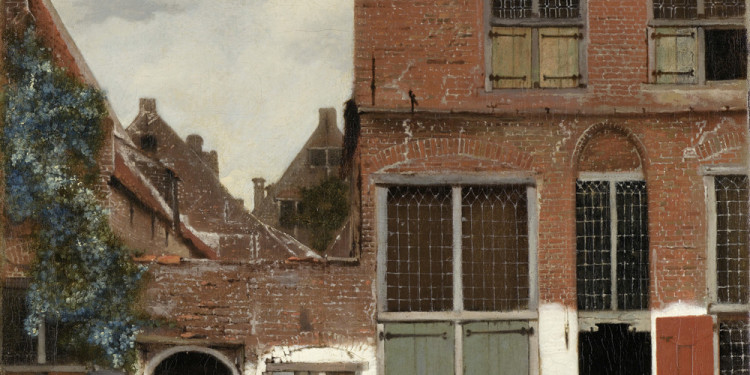
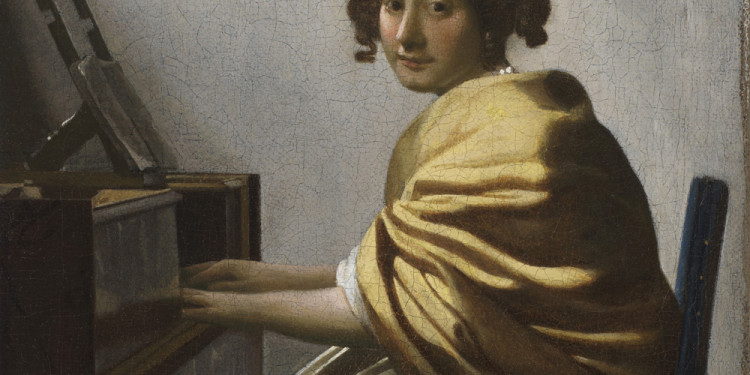
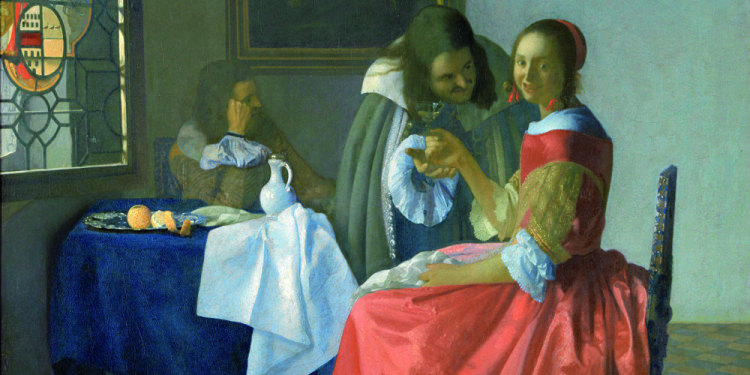
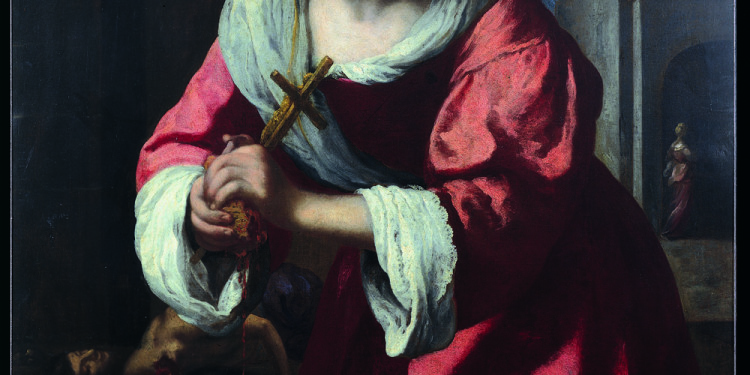
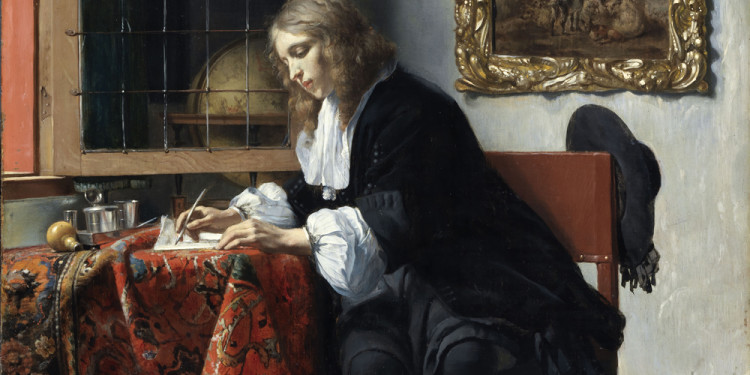
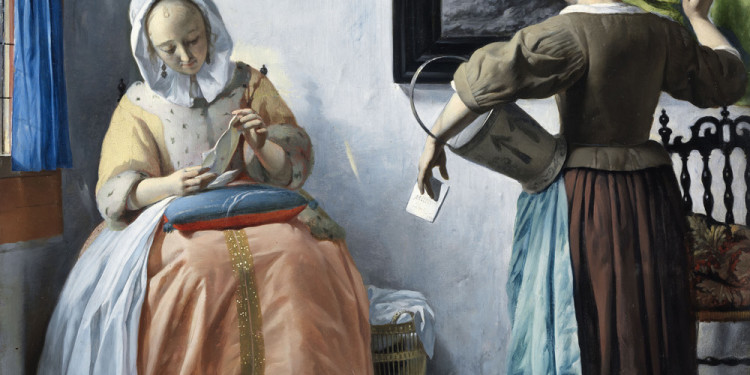
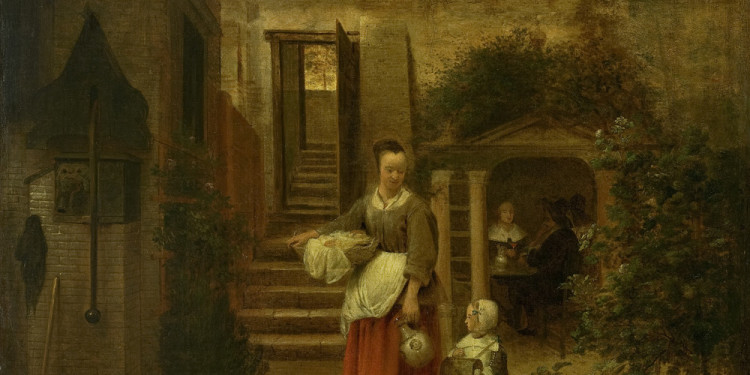
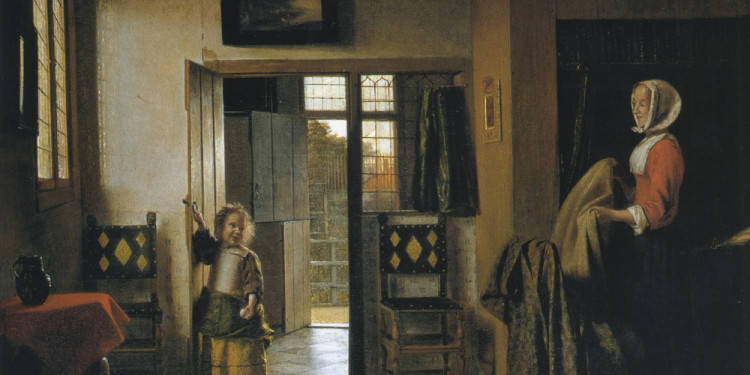
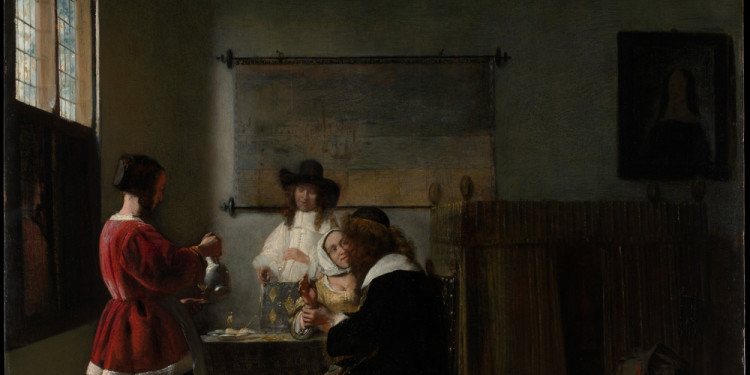
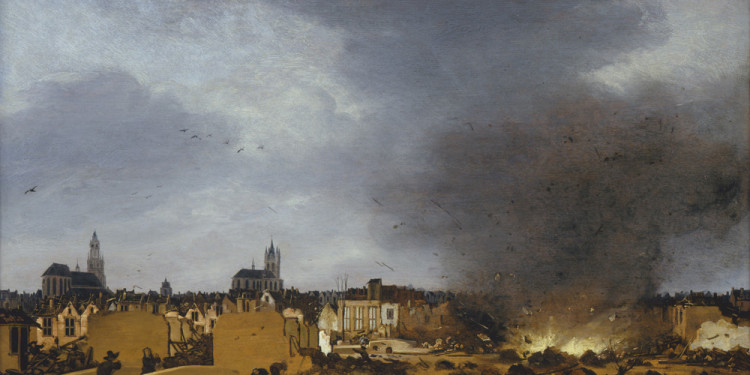
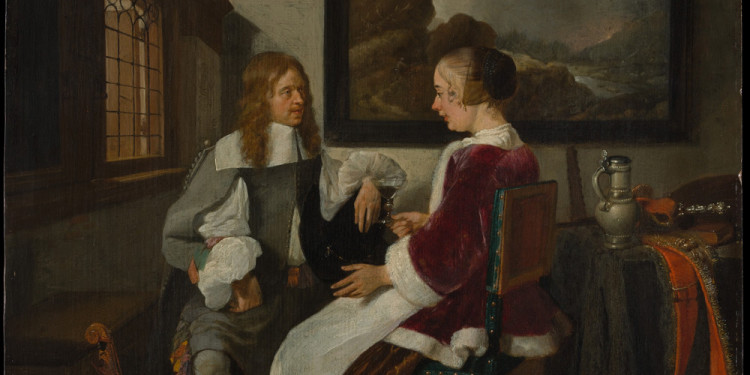
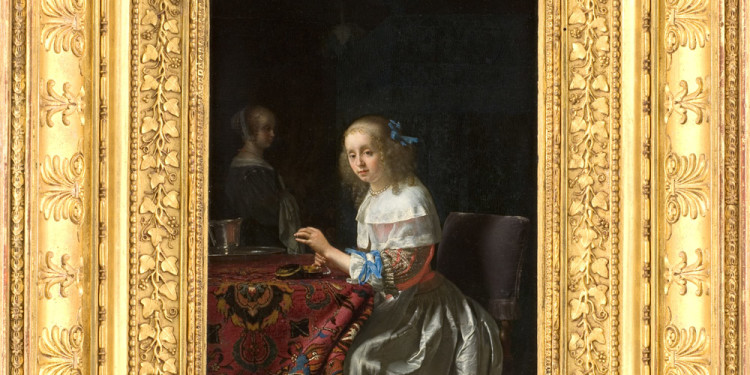
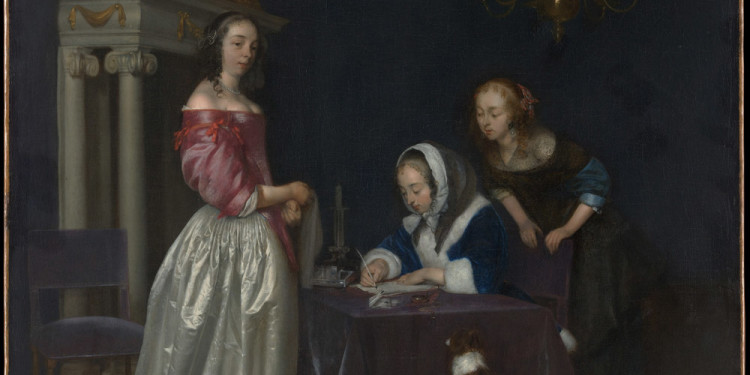
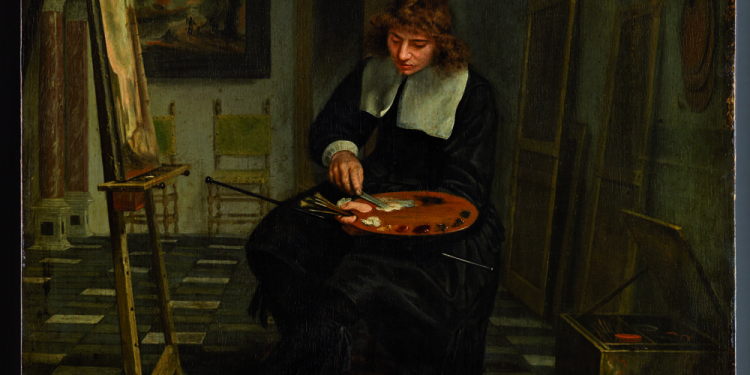
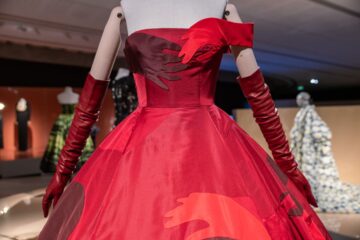
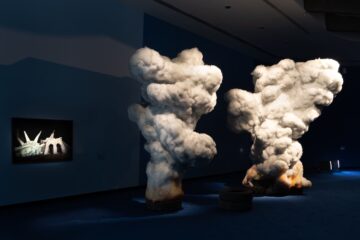



No Comment